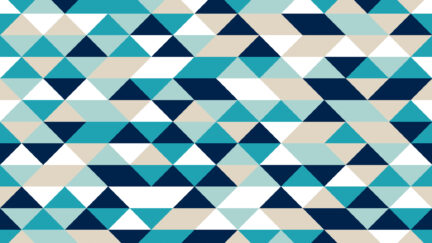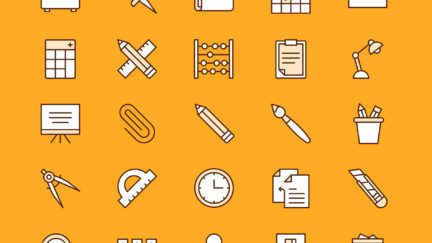How to design the perfect brand logo
All brands, businesses, companies and even some individuals need a logo. Along with a product and website, brand logos are one of the first things consumers connect with when they think of your brand.
The evolution of graphic design has seen high-quality, standout logo design become a valuable commodity due to the sheer amount of brands that are out there and the subsequent visual noise in any given industry. It’s estimated that we see up to a staggering 10,000 ads a day, all of which will feature a brand logo. That is a crazy amount, and it should make you consider the importance of getting your logo design on point from the offset.
But it’s not just about standing out from the crowd. Brand logos also need to encapsulate all things a brand or business represents. The logo must encapsulate and resonate with things that relate to the brand identity and culture, personality, sentiments, moods as well as the actual product. It’s an awful lot to consider when you take it all into account.
This is why we’ve come up with a guide to help you navigate the minefield of logo design (and to a lesser extent brand identity) to ensure that you’re getting all you want to communicate across in your imagery and are sure to stand out from the crowd. So don’t panic! Read on…
1. Getting your brand identity in order
You may already have a well-established brand and brand identity but are looking at logo design as part of a rebrand or refresh. Maybe you’re a newish brand that has been on the market for a short amount of time, though your brand identity isn’t something you’ve really consolidated yet either internally with your team or with focus groups. Or maybe you’re a brand that hasn’t hit the market yet and everything is completely fresh.
Either way, the early stages of logo design, be it a brand new or refreshed logo, is an important opportunity to consider what your brand really stands for outside of its product. Getting this in order is imperative in informing the colour scheme, imagery, and style of your brand logo and will make the design process that little bit easier.
Gather your team internally (or your thoughts) and take a step back to the very beginning:
- What made us start the business in the first place?
- What makes us different to our competition and other brands out there?
- What beliefs do we have as a collective and as a brand that set us apart?
- How do we want our customers to view and describe us?
Fleshing out details like these and arriving at a common consensus within your team, and/or focus group (if you have the resources) will get you one step closer to understanding what your brand identity actually is or what you want it to be.
2. Do some market research
Once you’ve got your brand identity in order, gather some visual inspirations to aid the brainstorming process. Pull together some examples of brand logos you like, old and new, industry-relevant or not. You may want to focus on brand logos that are in your product field, though this isn’t a necessity (think of some character traits between logos in the fast-food industry, for example).
While the overarching aim is to create something that is unique and stands out, it’s useful to get influences to aid potential design styles and colours. Competitor research is also an important part of any branding journey.
3. Brainstorm!
Get your team members together and start exchanging ideas on logos. Use your consolidated brand identity and all the verbal ideas, adjectives, and sentiments surrounding this as a guide. Gather as many ideas as you can from your team in terms of what you think the logo could look like. Although you won’t yet be at the stage where you have solid visual mock-ups, the brainstorming process, where you put yourself in the shoes of your audience, will help you get closer to what you want in your mind.
4. Settle on styles, colour schemes, typography, and make some mood boards!
Now is the time to start getting visual and to have some fun with colour schemes, imagery and words. If you haven’t already, it’s where you’ll want to bring in a graphic designer to start work on some initial mood boards and mock-ups based on what you discovered in your brainstorming sessions.
Bring in your initial influences alongside what you’ve discovered in your brainstorming session. If your graphic designer isn’t sure where to start, think about looking at Pinterest boards as an additional influence on styling. Maybe even Google some of the adjectives and sentiments to get some ideas on styling (though in all honesty, a graphic designer should know exactly what they’re doing at this part of the process!)
Regarding colours and typography, if you already have a brand font and palette established then of course be sure to incorporate these into your initial mock-ups. If not, use what you gained from your brand identity consolidation and brainstorming sessions to produce several versions of these. For example, the colour red portrays brightness and passion and is sure to pack a punch and stand out. White gives clean, modern and minimalistic vibes, while grey gives off sentiments of maturity and seriousness depending on the shade.
When it comes to typography, think of the emotions and sentiments certain fonts give off. Avoid comic sans like the plague unless you’re being ironic. Sans serif is a versatile font set for the most modern look, while most script fonts can look either down to earth, classic or individualistic.
In addition, consider variations on overarching themes which are relevant to your brand, with styles such as classic, retro, vintage, modern, quirky, light-hearted or serious being variations to consider.
5. Decision Time
Throughout the design process, make sure you keep in close contact with your graphic designer and keep the channels of communication wide open. Depending on your budget and deadline situations, allow as much time and revisions as reasonably possible and remember to keep in mind what we outlined at the beginning; a good logo should be:
- Instantly recognisable
- Eye-catching and unique
- Representative of your brand identity
- Reflective of your target audience
Where can I find graphic design talent?
If you don’t have all the means in your immediate arsenal, then don’t be perturbed by the detailed steps we’ve fleshed out above. We’ve based the above guide to give you a glance at what could be potentially done to cover all meaningful bases, which oftentimes with a budget, resource and timing restrains isn’t always feasible.
If you don’t have graphic designers or creatives in your immediate team, and you don’t have the budget for an agency, why not consider looking at part-time or freelance graphic designers or artists to help on a short-term and short notice basis? Most experienced freelancers in the branding and design department should be able to be brought up to speed relatively quickly on your brand identity. Sometimes a fresh, objective perspective on logo design and even branding itself can be valuable if it comes from someone outside your business who may find it easier to put themselves in the shoes of a consumer.














